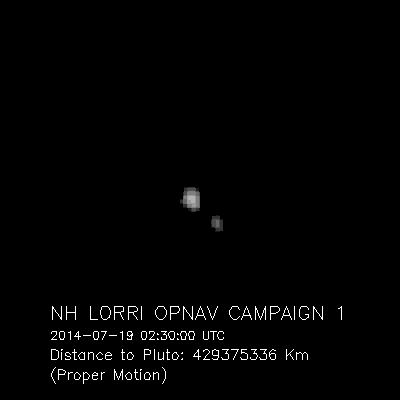 There is so little to see here, but to think that New Horizons arrives at this impossibly distant world next year is unreal. Other than some fairly minor bodies, after Pluto and Ceres are visited in 2015 — every major target of interest in the solar system that most of us grew up with will have been visited at least once by robotic spacecraft.
There is so little to see here, but to think that New Horizons arrives at this impossibly distant world next year is unreal. Other than some fairly minor bodies, after Pluto and Ceres are visited in 2015 — every major target of interest in the solar system that most of us grew up with will have been visited at least once by robotic spacecraft.
Humannaires!
 Mike Mongo (of OBEY fame) is now with Icarus Interstellar whose goal is the first interstellar mission before the year 2100. Please consider crowd-funding Humannaires!, his astronaut instruction manual for pre-teens. It is time for humanity to leave the nest and they just might be the generation to do it!
Mike Mongo (of OBEY fame) is now with Icarus Interstellar whose goal is the first interstellar mission before the year 2100. Please consider crowd-funding Humannaires!, his astronaut instruction manual for pre-teens. It is time for humanity to leave the nest and they just might be the generation to do it!
D.I.Y. Space Suits
 This guy’s space suit runs $2000 versus NASA’s 12 million. But will it work? Check out the podcast 99% Invisible for a great story on how home made space suits have become a real endeavor for enthusiasts the world over.
This guy’s space suit runs $2000 versus NASA’s 12 million. But will it work? Check out the podcast 99% Invisible for a great story on how home made space suits have become a real endeavor for enthusiasts the world over.
What Good is Space Exploration?
Answer: Could change/save the world as we know it. Short-sighted discreditors of space exploration often question what good it is to have a man on the moon. What good can come of sending probes to Mars for so many millions of dollars? Leaving aside mankind’s natural impulse to learn and understand everything around us (not to mention how well it has served us), practical reasons for exploring something as barren as our moon do run thin to the average citizen. While I do so value the science that happens at such remote locations, it is the getting there that challenges us to push the boundaries of known science. Coming up with a better and safer means of space travel can wind up producing something like this; a potentially abundant green source of energy that could transform the world and be the answer to many of the problems facing the us today.
What is often hard to explain to people who negate the need for space exploration are the side benefits of such programs for the whole world. Just like wars, performing something as technically challenging as space exploration results in pushing the boundaries of science in directions it might not have otherwise gone. When Sputnik was launched, most believed that space would go the way of a militarized zone and become a new battleground for superiority. Instead, all these years later we enjoy a vast communication network that has helped topple entire governments without a single bullet being fired. If it is a choice, I would choose space exploration over another world war to press mankind further along the path of progress any day.
So to those who think the best that going to the moon has produced is velcro — consider the possibility that by NASA may be on the way to providing the world with abundant clean energy as the result of trying to find a cheaper safer way to the stars. Not a bad fringe benefit.
Robonaut
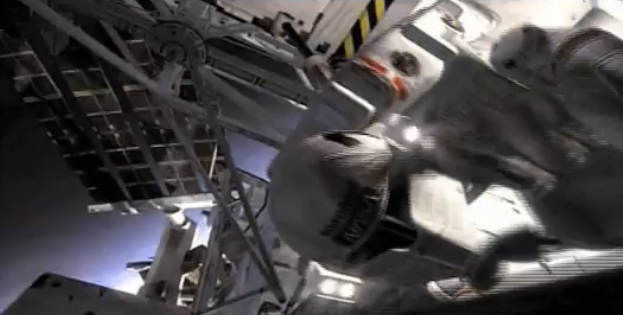 No, this is not Boba Fett in a deleted scene from a Star Wars movie. This is for real. NASA plans a “robonaut” on the Moon in 1000 days… from now!? NASA really doesn’t understand how to promote itself does it… How is this not bigger news?
No, this is not Boba Fett in a deleted scene from a Star Wars movie. This is for real. NASA plans a “robonaut” on the Moon in 1000 days… from now!? NASA really doesn’t understand how to promote itself does it… How is this not bigger news?
Outer Planets Mission Selected
 It is final. NASA (and ESA) have selected the next flagship mission to the outer planets. The target is the Jupiter system, and by “system” I do mean system. NASA’s side of things will concentrate on a Europa orbiter which will observe Jupiter’s moon in details that we have never seen before. See this youTube video for a good overview. The last time we were near Europa enough to make close observation was with Galileo, but problems with that spacecraft resulted in a limited amount of data that one would expect from such a long orbiter mission such as Galileo.
It is final. NASA (and ESA) have selected the next flagship mission to the outer planets. The target is the Jupiter system, and by “system” I do mean system. NASA’s side of things will concentrate on a Europa orbiter which will observe Jupiter’s moon in details that we have never seen before. See this youTube video for a good overview. The last time we were near Europa enough to make close observation was with Galileo, but problems with that spacecraft resulted in a limited amount of data that one would expect from such a long orbiter mission such as Galileo.
Beyond Europa, the mission will also be close enough to do great observations of its closest neighbor, Io, as well – of course – as it’s host planet Jupiter. Also worth noting is the possible adoption of an Io specific orbiter as part of the New Horizons class of spacecraft whose targets for the next decade have yet to be determined.
Lastly, and certainly not at all a small thing… ESA will be running a Ganymede orbiter to work in tandem with the Europa mission. The two missions are more like partner missions such as the 2 Mars rovers than separate ones. They seem to planning for them both to arrive at the same time (or even launched from the same rocket, is that even possible?).
For those unfamiliar with these bodies, check out these links to other posts about Europa and Ganymede.
Highlights for 2008
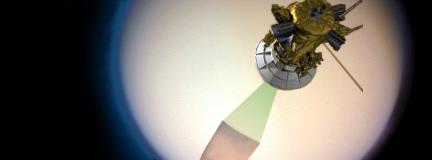 Cassini takes a pass at Titan on February 22 (already having made a pass this year on January 5th).
Cassini takes a pass at Titan on February 22 (already having made a pass this year on January 5th).

Soon after Titan, Cassini performs a truly unexpected maneuver and flies directly through the plumes of Enceladus on March 12th. This is a somewhat risky task for the probe as the particles it will surely encounter may pose some kind of impact threat to the spacecraft. Mission planners expect the risk to be low as they intend to turn the spacecraft around and let the less delicate side of Cassini bear the brunt of the material and photograph the geysers as it moves away from Enceladus. It should make for some of the most exciting planetary science planned for this year.

Cassini has another go at Titan on March 25.

Yup – you guessed it. Cassini at Titan again on May 12th.
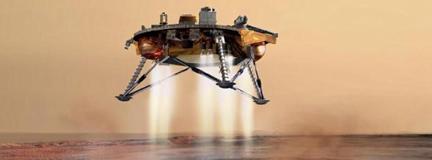
The Phoenix lander arrives at Mars on May 25th and (hopefully) makes good on the failure of the Mars Polar Lander. It will be the first time a probe will attempt a landing on the Martian pole and will conduct a series of experiments looking for the existence of water ice.

You can never have too much of a good thing. Cassini at Titan again on May 28th as well as July 31.
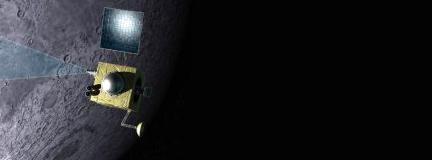
Chandrayaan becomes India’s first planetary probe as it leaves for the moon in Early July (was April).
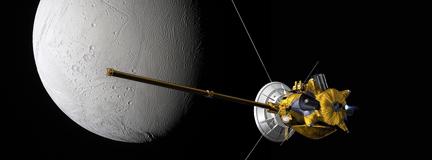
The extended Cassini mission has made Enceladus a prime target of investigation and the new encounters begin on Aug 11th and comes within 54km of the surface.
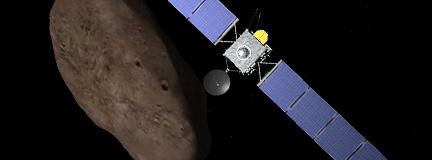
Rosetta still on its way for an encounter with Comet 67P/Churyumov-Gerasimenko in 2014, will make a close pass at an asteroid named 2867 Steins on Sept 5th at a distance of only 1700 km. Steins is a small asteroid measuring only a few kilometers in size and the craft will be traveling at a relatively slow speed which should allow for some good resolution images to be acquired during the encounter.

Messenger (having just completed the first encounter in 33 years this past week) has another go at Mercury on Oct 6th and flies past more uncharted territory on its way to eventual orbit insertion in 2011.

Two more close flybys of the Saturnian moon Enceladus on Oct 9 and Oct 31. The first at hair-raising distance of 25km and the second around a more reasonable 200km.
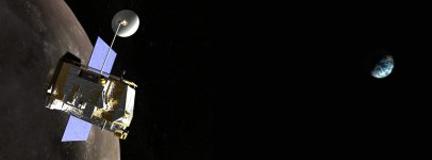
In an effort to recognize the International Lunar Decade (and intended manned Lunar missions within 15 years), the United States returns to the moon with the Lunar Reconnaissance Orbiter on Nov 3rd. It is expected to begin its scientific goals only 3 days after launch and is expected to look for possible deposits of water ice in permanently shadowed craters near the Lunar poles.

And finally more Titan flybys on Nov 3, Nov 19, Dec 5 and Dec 21.
All this is in addition to the ongoing work of Opportunity and Spirit on the surface of Mars. Mars Express and Mars Reconnaissance in orbit around Mars. Cassini’s non-targeted continuing tour of other icy Saturnian moons. And who knows, maybe we will see more than 2 or 3 reports coming from the ever quiet Venus Express mission currently at Venus.
Sadly, some very exciting missions will be quietly traveling en route to their targets and are not expected to be heard from in 08 like the Dawn Mission to the Asteroid Belt, New Horizons mission to Pluto/Charon, the newly re-targeted Deep Impact mission (now known as Epoxi) as well as Stardust now on its way to a follow-up visit to Tempel 1 the comet that was smacked by Deep Impact in 2005.
Dawn: Dual Mission to Vesta and Ceres
The Dawn mission to the 2 largest asteroids in our Solar System was supposed to have been launched this week, but has been postponed until September of this same year. Apparently due to Dawn’s repeated launching schedule delays it could have interrupted the launching schedule for the Mars Pheonix lander which has a less flexible launch window.

The above images are the best taken thus far of both objects by the Hubble Space Telescope (images not to scale). Vesta appears to be similar to most objects of its type with one exception... We most likely have samples of this body here on Earth as meteorites. It seems the composition of a bunch of meteors known as HED class meteors match that of observations made of Vesta. The theory is that at some point a huge impact took place on Vesta which shattered it into many fragments. Some of these Vesta originating fragments are orbiting the sun in the Asteroid belt to this day while smaller bits of this collision were thrown inward toward the sun (likely through disturbances coming from Jupiter) and some wound up landing here on Earth as meteors. If this turns out to be true, then Vesta would be one of only 5 bodies that we currently have confirmed samples of. Those additional bodies being our own moon, Mars (also through a similar natural meteoric process), Wild 2 and Earth itself.
Ceres on the other hand is the largest Asteroid in the Solar System and for a few days was considered a planet in 2006 until the definition of “planet” was fine tuned a few days later to exclude not only Ceres, but famously Pluto as well. However, an upgrade was in order and Ceres is now officially a Dwarf Planet as it maintains its own spherical shape, orbits the Sun and is not itself a moon of any other body. More interesting than its definitive status in the Solar System is the fact that it is relatively warm, may have a tenuous atmosphere and frost on the surface. Some surface features have also raised many questions about the nature of Ceres such as the dark spot that was imaged in 95 and later disappeared. Then there is the recently observed white spot which has no theoretical identity at all. Hopefully, this may mean that in 2015 we may discover that Ceres is not just another heavily cratered inactive grey body in our Solar System but another enigmatic body like Io and Enceladus that defies preconceived notions of what to expect. Who knows what processes might cause Ceres to be active on any level, but surely we have been surprised before.
The Mars Laser and the Future of Space Exploration
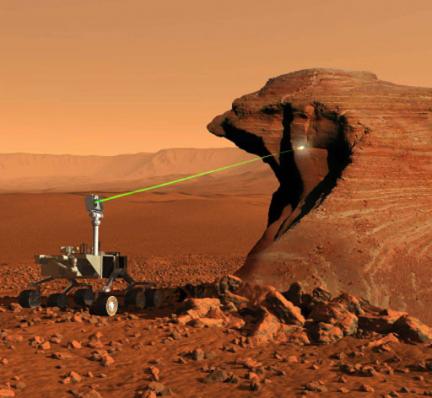
The coming Mars Science Lab mission will be employing a most unusual device for examining the surface of another planet. When MSL reaches Mars around 2010 it will be rolling about the surface of Mars zapping rocks and soil with an on-board laser beam generator. The beam is part of a science package that practices laser-induced breakdown spectroscopy, or LIBS for short. First, scientists on the ground will determine which objects or features imaged with normal on-board cameras seem worthy of further examination. Once a target is selected, a beam is generated and focused upon a small area of that target. This will burn or superheat the material into a plume of particles that expands at supersonic speeds as it cools. It is at this cooling time that the spectrometer will image the cloud and use the widest range of electromagnetic wavelengths possible — from infrared light through visible light and all the way to the ultraviolet. Since every element we know of has a signature of some wavelength within that wide range, the spectrometer will be able to determine all the materials present in the sample (even to simple trace amounts) by detecting and imaging the specific wavelength signatures present in the cloud.
What is most exciting about the instrument is that it is yet another example of NASA really employing non-traditional methods of exploring space. Gone are the old flyby probes of the 70’s and 80’s that simply pick a target and speed by with 95% of its mission goals completed in hours. So far this decade, NASA has chased a comet and collected comet dust in a grid of aerogel; intentionally slammed a heavy probe into a comet to form a man-made crater; they delivered 2 rovers to the surface of Mars that got there from a bounce landing; performed an impromptu landing of a non-lander type probe on the surface of an asteroid and now we will be shooting rocks on Mars. It provides us hope that once we are through the current financial speed bump of retiring the Shuttle fleet and completing our International Space Station commitments we can expect some really exciting new missions to our extended Solar System family. Some have already suggested such missions like air-probes on Mars and Saturn’s Titan; more aerogel collector type missions at Saturn’s Enceladus to collect geyser dust and most exciting of all would be a tunneling probe that could melt its way through the icy crust at Jupiter’s Europa in order to release a submarine type probe into Europa’s vast underground ocean.
It is stunning when you consider the near perfect scorecard for NASA’s unmanned space missions in the last 10-15 years and yet the organization is currently saddled with the image of being ineffective, stodgy and even sloppy. All these perceptions are coming from the manned side of its operations which hasn’t really done anything inspirational since apollo and the initial shuttle years. If only NASA was able to transfer some of the bold ambitions of the unmanned wing of its operations to the manned side of things, then maybe this image could just go away. I propose that even with the occasional tragedy and loss of life (which is inevitable on such endeavors) people would be much more accepting of such losses if astronauts died in the pursuit of doing something remarkable like going to Mars or even the moon for a second time. I mean, who wants to die so that we might hand deliver another component to the space station?
It is high time for us to be inspired by something again… on a grand scale. Time to focus at least some of our attention on something other than the fear of being blown up by terrorists or waging another war on a culture we know so little about. It is truly time to forget about Paris Hilton, forget about reality television and all the other pointless distractions that keep us from dreaming. In many ways it is bigger than just doing science in space — we need to give the next generation something better to think about. Something so exciting that the trivialities of the day that seem to dominate the national consciousness will at least be challenged by something so great that it will be hard to ignore.
We need to get going.
Moon Base Vs Fantastic Martian Future
Stars or Wars
With all the news recently of renewed manned moon missions and the “intention” to send astronauts eventually from there on to Mars, I was thinking of the time frames on these goals. In just proposing going back to the moon, NASA has suggested this goal might take 10 years. Interesting considering that in the 1960’s we announced that goal (absent nearly all the technology to actually do it) and we actually set foot on the moon in 9 years. How it is our technology is nearly 50 years more advanced and yet it will still somehow take us one additional year more to do something we had already done 6 times previous in the 1960’s is beyond me.
Looking past the Moon to Mars I'm guessing will take, optimistically, at least another 5 years beyond that. More realistically… allowing for accidents, budget delays, etc… a manned Mars mission may not take place for 20 years from now. I am 37 right now, which makes me 57 when someone first takes a step onto Martian soil. If at that point, around 2025, we drop off from planetary exploration like we did as a reaction to the Apollo program, well… essentially… I will likely have seen as far into the cosmos as man will have traveled in my lifetime. Unless the atmosphere for this kind of exploration changes considerably in the next 20 years (which could happen) it is hard to imagine that before I shuffle off this mortal coil, that NASA (or anybody) would be willing to tackle a manned mission to places as exotic as Jupiter or Saturn inside of an additional 20 years.
All of these goals listed above would also cost a considerable amount of cash. The budget for a Moon base for instance would likely eat up all resources alloted to NASA and then moving on to Mars anytime thereafter would surely dwarf the kinds of numbers we saw for Apollo – even considering for inflation. I know some books have been written by very reliable people that suggest a manned mission to Mars could be done for 1/10 the cost that NASA tosses about regularly, but everyone knows that government agencies could not (safely) cut corners on these missions. Many would also be unwilling to politically risk the personal responsibility of some colossal failure on such a high profile event in human history. A manned mission to Mars will not be done on the cheap… trust me… there will be no New Horizons economical version on a manned mission to any place other than Starbucks Coffee.
So, considering the available band-width available to the human exploration of space… how do we get to become a space faring species like we see in popular science fiction? How might humanity ever muster up enough resources and dedication to potentially populate the Moon, populate Mars, build cities in Earth orbit, explore the moons of Jupiter and send teams of inquisitive scientists to study the lakes of Titan? The only way I could see any of that happening in such a way that it becomes a part of the everyday human experience, would be for human kind to figure out a way to do away with war.
To even approach some of the more reasonable science fiction visions of humanity’s future would cost not only a whole lot, but would actually require a lion’s share of the full available budget as national defense currently does. It is not hard to imagine that a real human reach beyond terra-fir-ma would actually be more expensive than current or even reagan-era military spending was. So much of human effort, technology and riches are either spent using or developing the machines of war in order to insure each nation’s own national security or ambitions. If you examine much else of what we human’s spend our time and resources on, you will discover that pretty much the only one of those which could theoretically be nullified is the cost of war. No matter the progress of technology, we human’s will still need to pay for social programs, health care, infrastructure… the list goes on. The only major cost of any nation – that is not directly related to some kind of progress or maintenance which is the natural result of actually having a nation or civilization to uphold – is the cost of making or protecting one’s self from an act of war.
So until we figure out how to avoid these conflicts, as well as come up with a system which can guarantee all nations protection from any rogue powers bent on invasion, we will have to keep our larger dreams of a space-faring society to tiny, little, very long and time-consuming steps. The human race has to figure out some way to stop spending a majority of its energy making war and and divert that energy into the greater goals of all sciences. Only then can the fantastic vision of the future that we have had for generations be within the reach of a single lifetime.
